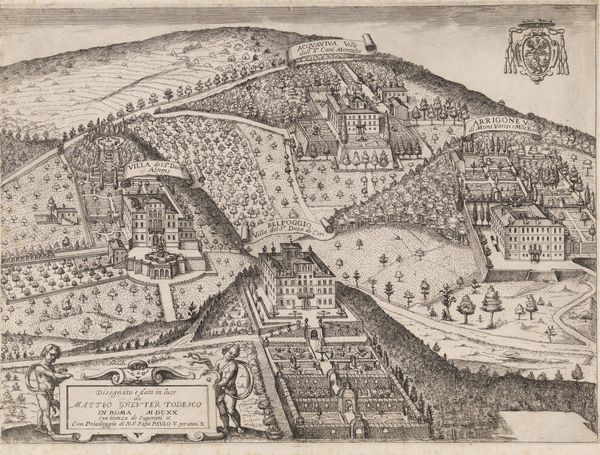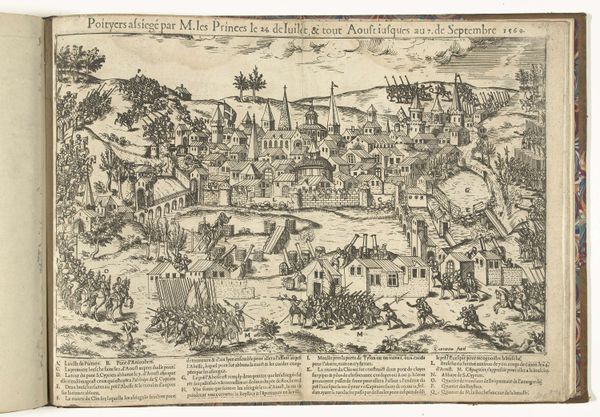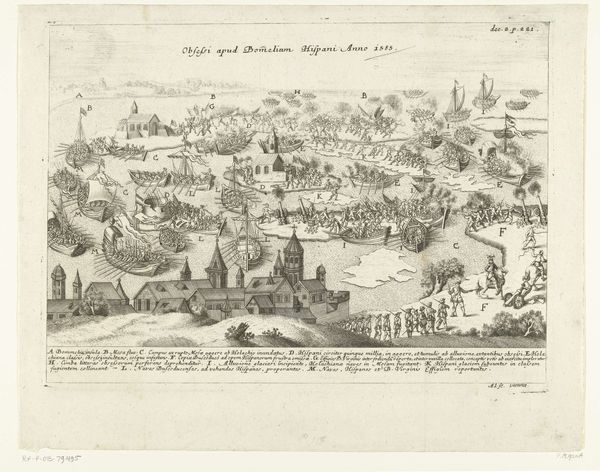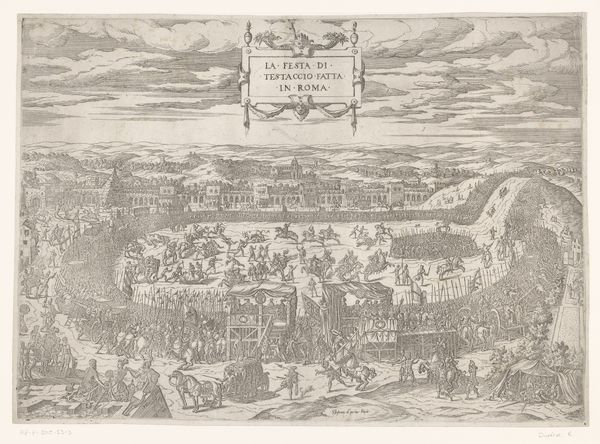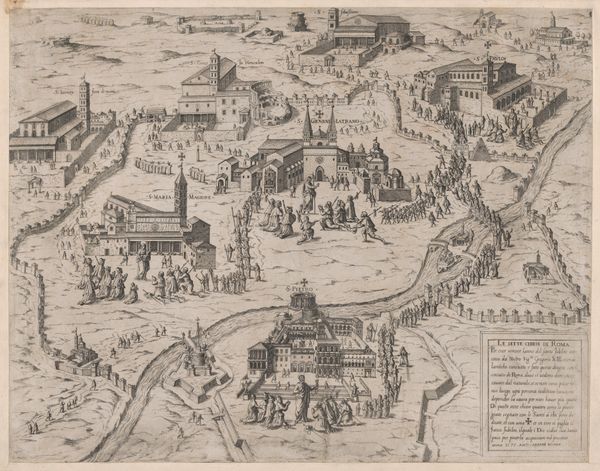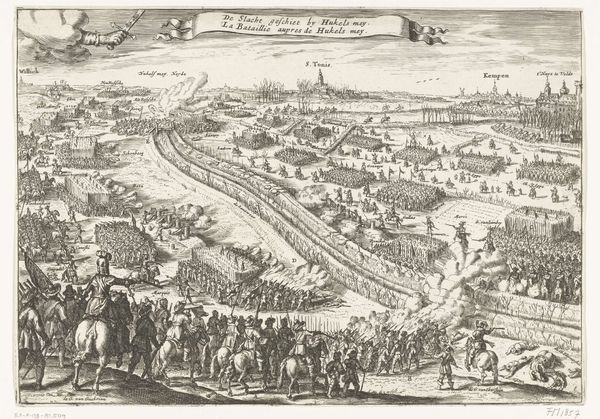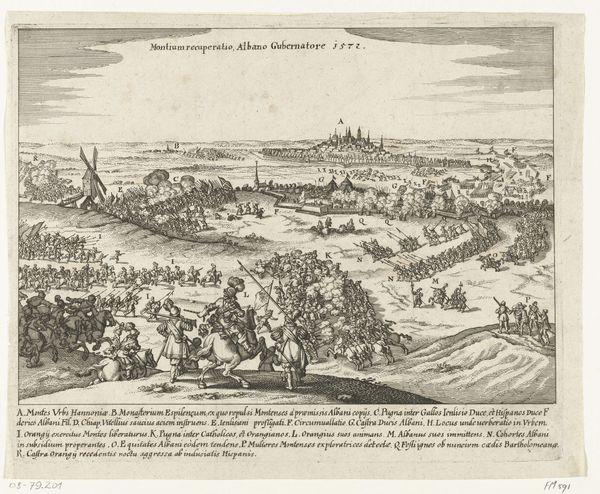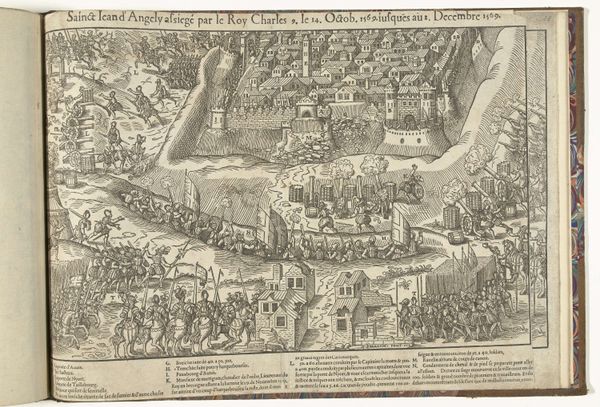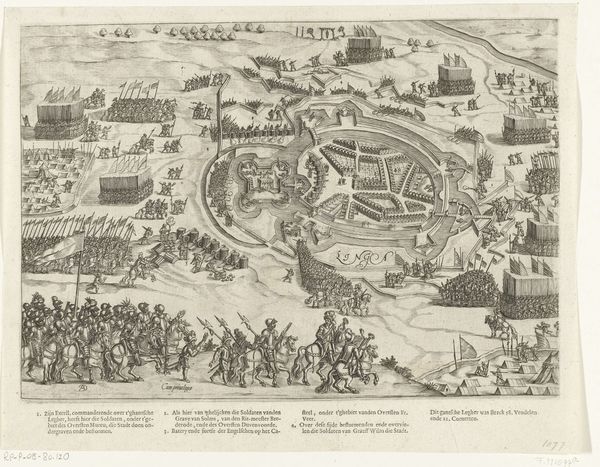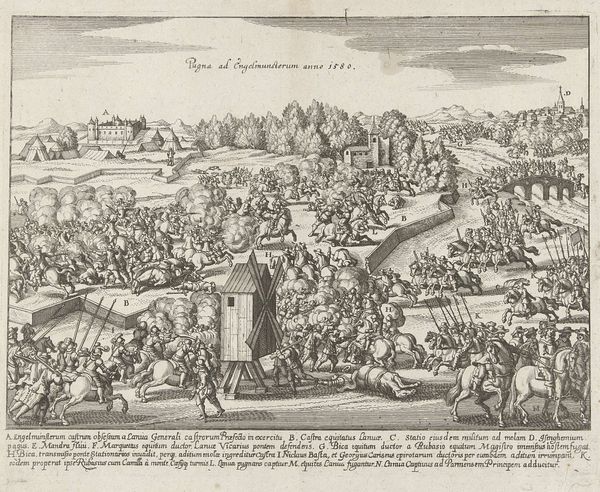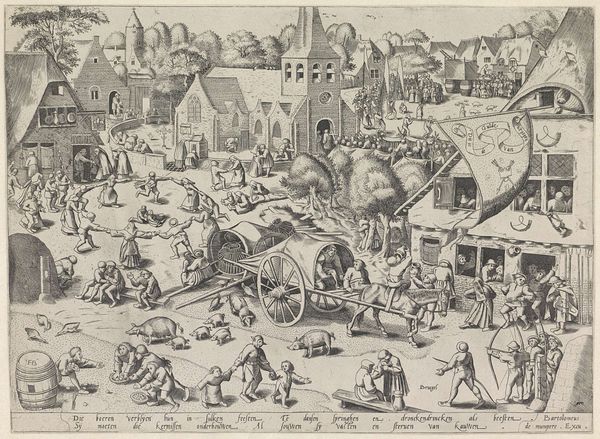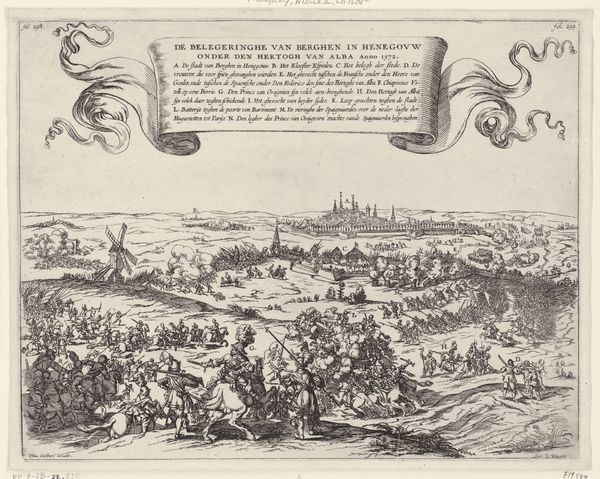
etching
#
dutch-golden-age
#
etching
#
landscape
#
cityscape
#
genre-painting
Dimensions: height 245 mm, width 304 mm
Copyright: Rijks Museum: Open Domain
Curator: This is “IJsvermaak op de Schelde bij Antwerpen, 1670”, an etching by Gaspar Bouttats from 1670. It's held at the Rijksmuseum. Editor: It's quite a lively scene! There are tents and people playing on the ice, with a city skyline in the background. The amount of detail in this etching is striking, and given it’s about a frozen river, I wonder what to make of this bustling cityscape scene and these winter activities as a means of cultural production? Curator: Notice the tents set up on the ice, essentially creating a temporary marketplace or village. What does this tell us about the infrastructure of the time, and the ability of people to mobilize and adapt resources in a challenging environment? It almost resembles a military encampment. Think about the materials used for these tents: where did they come from? Who produced them? How do you think this impacts our understanding of Dutch commerce and labour practices of the 17th century? Editor: So it's less about a spontaneous event and more about a consciously created space using specific resources. Curator: Precisely. Look closer. Consider the clothing the people are wearing. Different social classes are represented through the type and the apparent quality of their garments. Who could afford elaborate clothing, and what does that say about the society depicted? Editor: It shifts the reading of the etching from a simple depiction of leisure to a visual representation of resource allocation and social hierarchy, represented through access to and use of materials. Curator: Indeed. It makes one consider the larger system at play. It gives us clues about daily life but, more significantly, insights into how early modern Antwerp operated regarding resource exploitation, manufacturing and social mobility. Editor: Fascinating! I hadn’t considered it from this production angle. Thinking about the etching itself as an artefact is a different way of approaching its history and context.
Comments
No comments
Be the first to comment and join the conversation on the ultimate creative platform.
